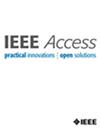A Novel Unified Single-Phase Active Rectifier Topology With Advanced Operating Modes for Smart Grids
IF 3.4
3区 计算机科学
Q2 COMPUTER SCIENCE, INFORMATION SYSTEMS
引用次数: 0
Abstract
Active rectifiers are of paramount importance for guaranteeing power quality in smart grids, due to their characteristics of sinusoidal current consumption and unitary power factor operation. In this paper, a novel unified single-phase (USP) front-end converter is proposed for active rectifier applications in smart grids, offering additional advantages and a set of relevant features besides the conventional active rectification. With the proposed USP front-end converter, the following independent operation modes are available: 1) operation as a traditional active rectifier, ensuring sinusoidal AC grid current (with very low total harmonic distortion), unitary power factor, and controlled DC link voltage; 2) operation as a shunt active power filter, producing a current with controlled harmonic content and phase angle at the fundamental frequency, in order to ensure almost sinusoidal current and a unitary power factor at the AC power grid; and 3) combined operation as an active rectifier and as a shunt active power filter, providing power to the DC load, while simultaneously producing a current waveform with reduced harmonic content and controlled power factor. By controlling these individual operation modes, electrical appliances in smart grids can operate dynamically and collaboratively, improving power quality. In addition, the proposed USP front end converter may operate as a single-phase diode rectifier in case of control system failure or damage of the controlled switching devices. This situation is particularly relevant since it allows to supply the DC load even under such unfortunate circumstances. Along with the paper, the topology of the proposed USP front end converter, its principle of operation, and the control strategies for each operation mode, are separately explained. A 3.6 kW, 230 V–50 Hz laboratorial prototype of the proposed USP front end converter is presented, and the experimental validation is carried out for all operation modes.一种新型统一单相有源整流器拓扑与先进的智能电网运行模式
有源整流器具有电流消耗为正弦、功率因数为一元的特点,对保证智能电网的电能质量至关重要。本文提出了一种用于智能电网有源整流器应用的新型统一单相(USP)前端变换器,它除了具有传统有源整流的优点外,还具有一系列相关特性。采用所提出的USP前端变换器,可实现以下独立运行模式:1)作为传统有源整流器运行,确保正弦交流电网电流(总谐波失真非常低)、统一功率因数和可控直流链路电压;2)作为并联有源电力滤波器工作,在基频处产生谐波含量和相角可控的电流,以保证交流电网的电流几乎为正弦,功率因数为统一;3)作为有源整流器和并联有源电源滤波器联合运行,为直流负载提供电源,同时产生谐波含量降低、功率因数可控的电流波形。通过控制这些单独的运行模式,智能电网中的电器可以动态协作运行,从而改善电能质量。此外,在控制系统故障或被控开关设备损坏的情况下,所提出的USP前端转换器可以作为单相二极管整流器工作。这种情况是特别相关的,因为它允许在这种不幸的情况下提供直流负载。本文还对所提出的USP前端变换器的拓扑结构、工作原理以及每种工作模式的控制策略进行了单独说明。提出了一个3.6 kW, 230 V-50 Hz的USP前端转换器的实验室样机,并在所有工作模式下进行了实验验证。
本文章由计算机程序翻译,如有差异,请以英文原文为准。
求助全文
约1分钟内获得全文
求助全文
来源期刊

IEEE Access
COMPUTER SCIENCE, INFORMATION SYSTEMSENGIN-ENGINEERING, ELECTRICAL & ELECTRONIC
CiteScore
9.80
自引率
7.70%
发文量
6673
审稿时长
6 weeks
期刊介绍:
IEEE Access® is a multidisciplinary, open access (OA), applications-oriented, all-electronic archival journal that continuously presents the results of original research or development across all of IEEE''s fields of interest.
IEEE Access will publish articles that are of high interest to readers, original, technically correct, and clearly presented. Supported by author publication charges (APC), its hallmarks are a rapid peer review and publication process with open access to all readers. Unlike IEEE''s traditional Transactions or Journals, reviews are "binary", in that reviewers will either Accept or Reject an article in the form it is submitted in order to achieve rapid turnaround. Especially encouraged are submissions on:
Multidisciplinary topics, or applications-oriented articles and negative results that do not fit within the scope of IEEE''s traditional journals.
Practical articles discussing new experiments or measurement techniques, interesting solutions to engineering.
Development of new or improved fabrication or manufacturing techniques.
Reviews or survey articles of new or evolving fields oriented to assist others in understanding the new area.
 求助内容:
求助内容: 应助结果提醒方式:
应助结果提醒方式:


